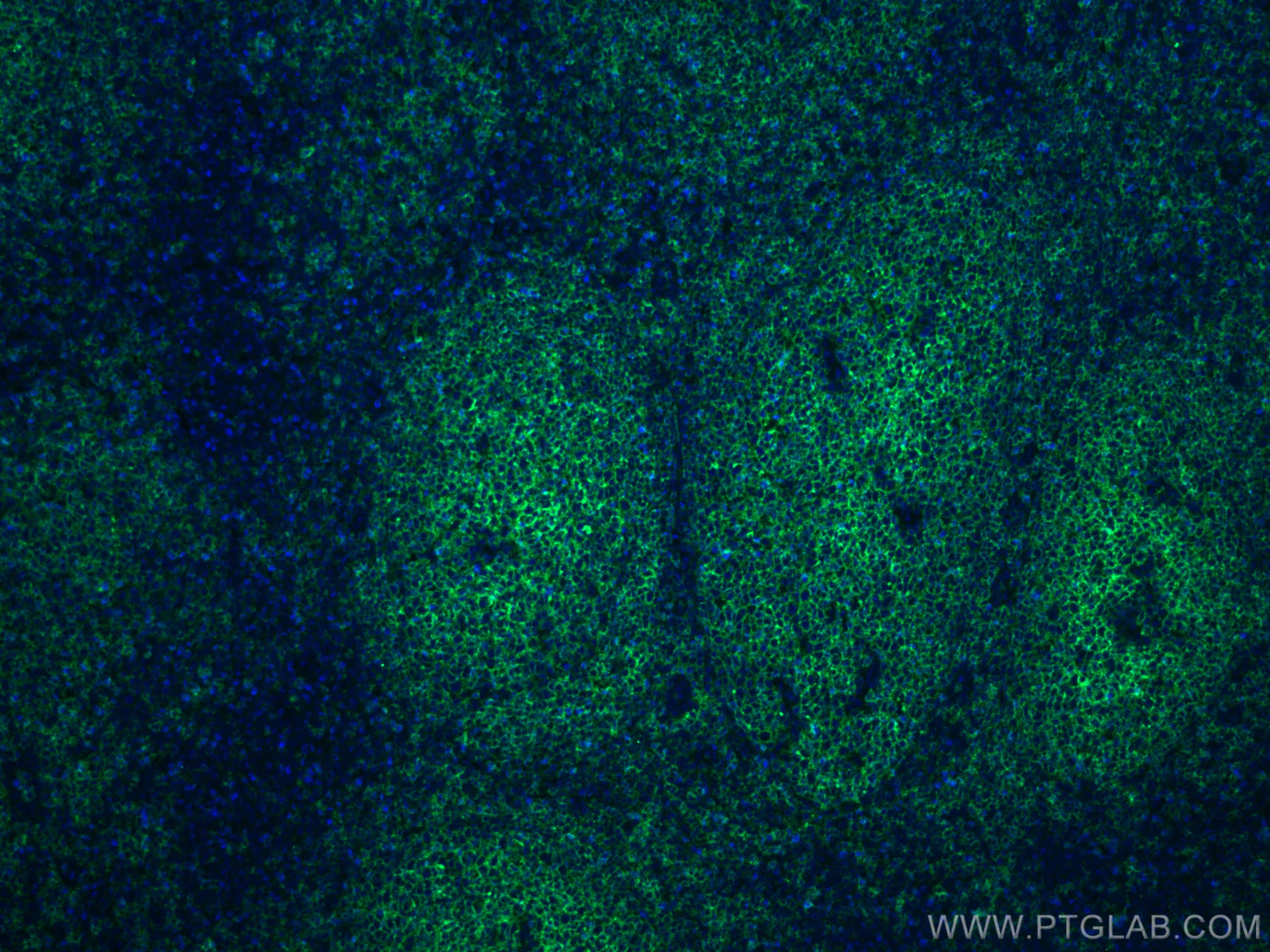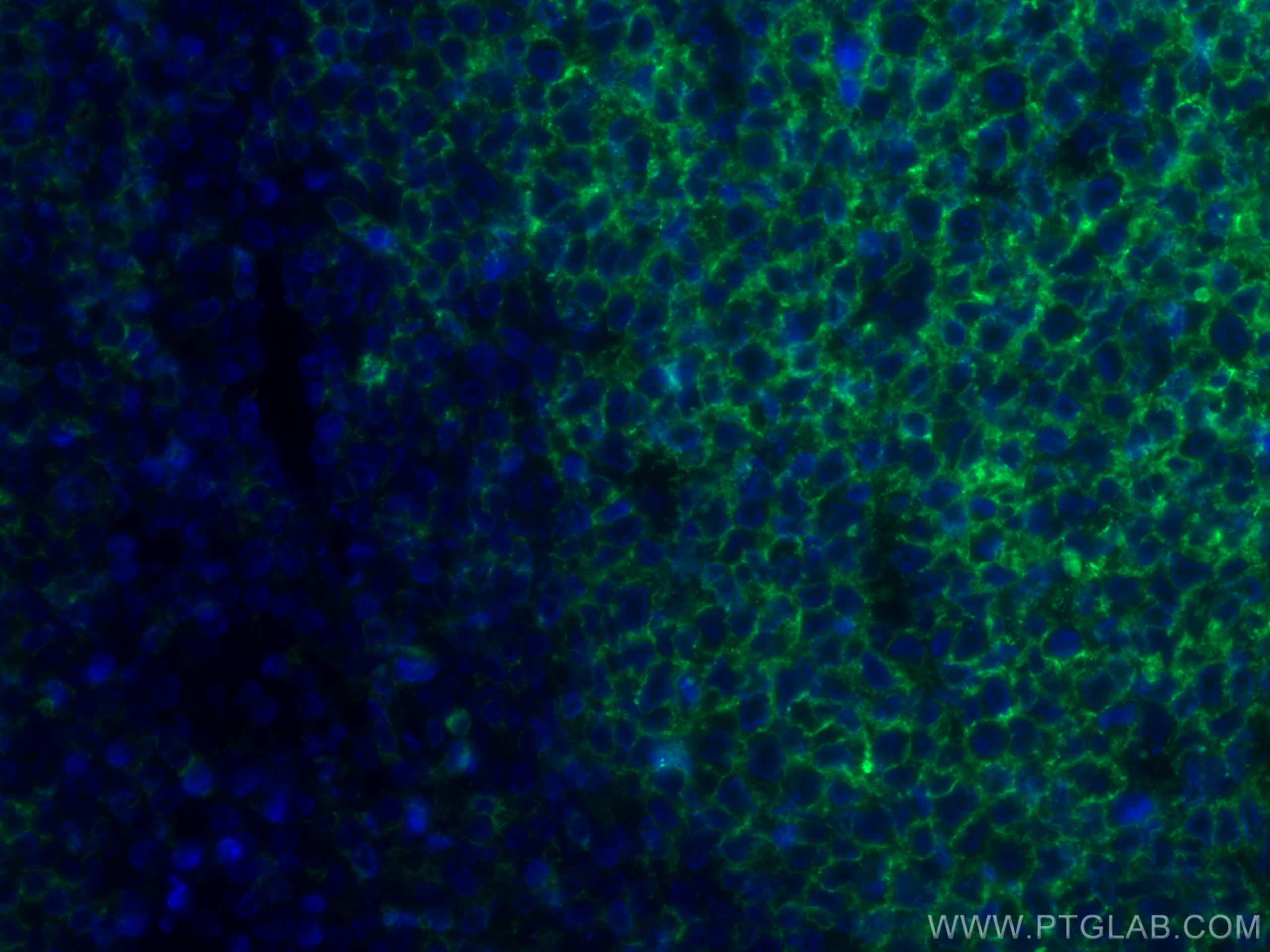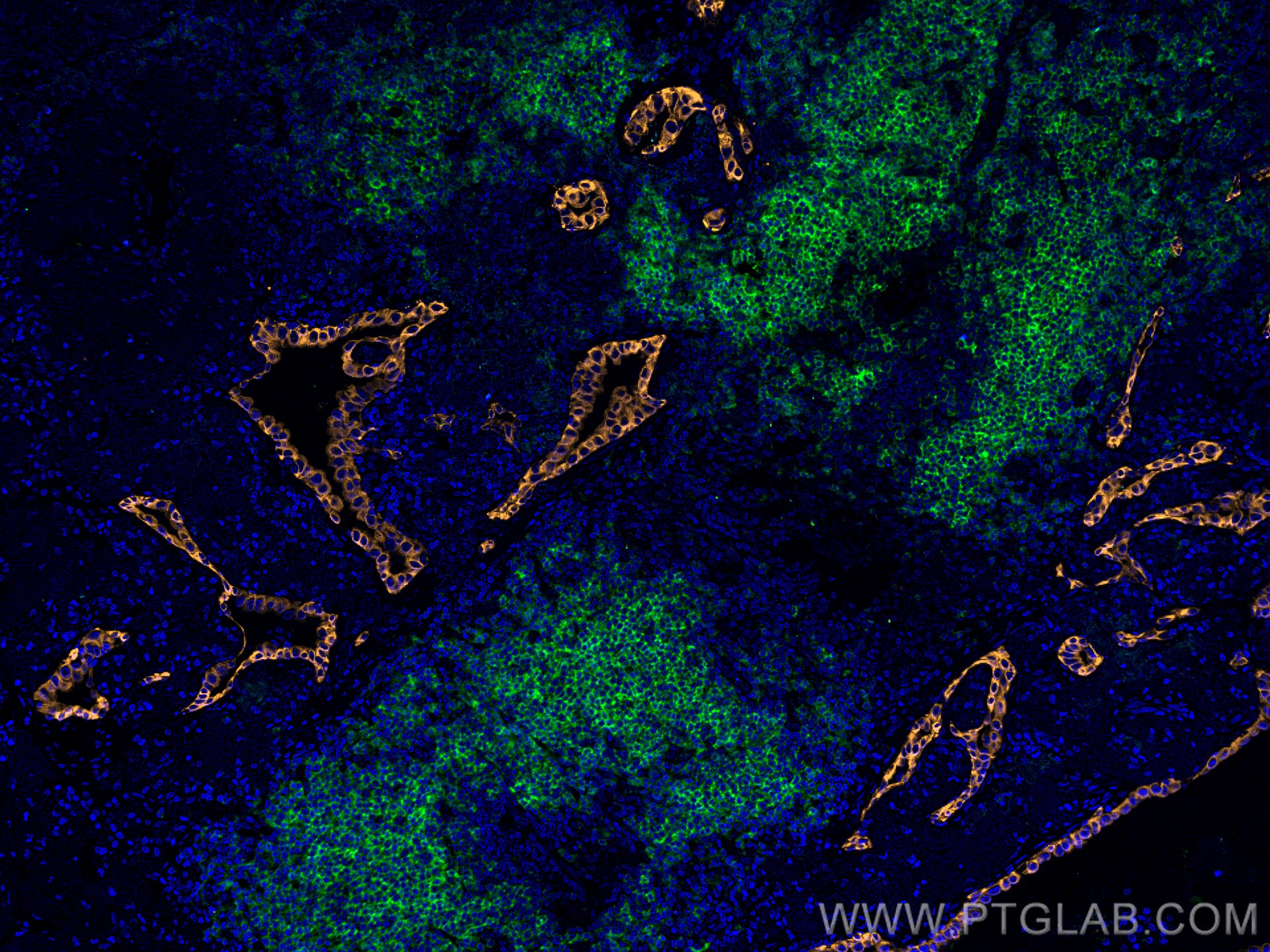CD20 Monoklonaler Antikörper
CD20 Monoklonal Antikörper für IF
Wirt / Isotyp
Maus / IgG2b
Getestete Reaktivität
human
Anwendung
IF
Konjugation
CoraLite® Plus 488 Fluorescent Dye
CloneNo.
4A7G3
Kat-Nr. : CL488-60271
Synonyme
Galerie der Validierungsdaten
Geprüfte Anwendungen
| Erfolgreiche Detektion in IF | humanes Tonsillitisgewebe, humanes Lungenkarzinomgewebe |
Empfohlene Verdünnung
| Anwendung | Verdünnung |
|---|---|
| Immunfluoreszenz (IF) | IF : 1:50-1:500 |
| It is recommended that this reagent should be titrated in each testing system to obtain optimal results. | |
| Sample-dependent, check data in validation data gallery | |
Produktinformation
CL488-60271 bindet in IF CD20 und zeigt Reaktivität mit human
| Getestete Reaktivität | human |
| Wirt / Isotyp | Maus / IgG2b |
| Klonalität | Monoklonal |
| Typ | Antikörper |
| Immunogen | Rekombinantes Protein |
| Vollständiger Name | membrane-spanning 4-domains, subfamily A, member 1 |
| Berechnetes Molekulargewicht | 297 aa, 33 kDa |
| GenBank-Zugangsnummer | BC002807 |
| Gene symbol | MS4A1 |
| Gene ID (NCBI) | 931 |
| Konjugation | CoraLite® Plus 488 Fluorescent Dye |
| Excitation/Emission maxima wavelengths | 493 nm / 522 nm |
| Form | Liquid |
| Reinigungsmethode | Protein-G-Reinigung |
| Lagerungspuffer | BS mit 50% Glyzerin, 0,05% Proclin300, 0,5% BSA, pH 7,3. |
| Lagerungsbedingungen | Bei -20°C lagern. Vor Licht schützen. Nach dem Versand ein Jahr stabil. Aliquotieren ist bei -20oC Lagerung nicht notwendig. 20ul Größen enthalten 0,1% BSA. |
Hintergrundinformationen
CD20 is a 33-37 kDa transmembrane phosphoprotein. CD20 is a B-lymphocyte surface molecule that is widely expressed during B-cell ontogeny, from early pre-B-cell developmental stages until final differentiation into plasma cells. CD20 functions as calcium-permeable cation channel. It is involved in the regulation of B-cell activation and proliferation. CD20 serves as a useful target for antibody-mediated therapeutic depletion of B-cells. This antibody is conjugated with CL488(Ex/Em 488 nm/515 nm).
Protokolle
| Produktspezifische Protokolle | |
|---|---|
| IF protocol for CL Plus 488 CD20 antibody CL488-60271 | Protokoll herunterladen |
| Standard-Protokolle | |
|---|---|
| Klicken Sie hier, um unsere Standardprotokolle anzuzeigen |




